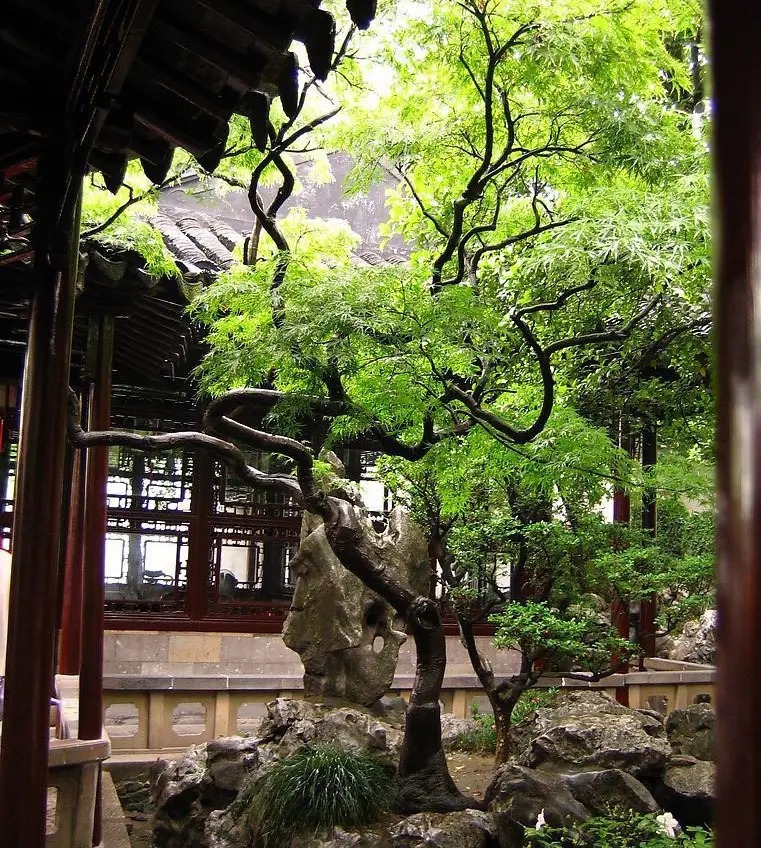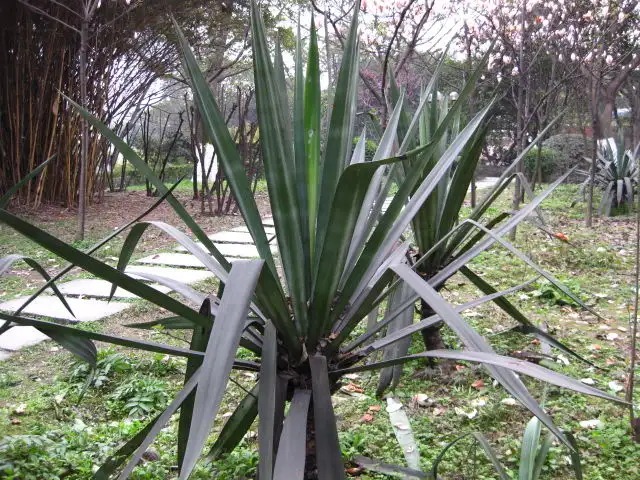What principles should be followed in planting garden plants?
What principles should be followed in planting garden plants?
 1. Comply with the nature and functional requirements of green space
1. Comply with the nature and functional requirements of green space
The nature and function of garden green space determine the choice of plants and the form of planting. Garden green space has many functions, but when it comes to a specific green space, there is always a specific main function. For example, the main function of street green space is to provide shade and organize traffic. Therefore, the planting focuses on solving the problems of shade, traffic and aesthetics (large tree crowns on the road, hedges for isolation, and ornamental effects).
2. Meet the needs of landscape composition
1) The overall artistic layout should be coordinated
Regular garden layouts mostly use regular configurations, with planting in pairs, rows, center, flower beds, and flower stands, with plant shaping and pruning. In natural gardens, asymmetrical natural planting is used to fully express the natural posture of plants, such as solitary planting, cluster planting, group planting, woodland, flower clusters, flower borders, and flower belts.
2) Consider the overall viewing effect
People have many requirements for appreciating plant scenery, but there are very few, or even no, all-round garden plants. Therefore, when arranging plants, they should be reasonably matched according to their ornamental characteristics to show the comprehensive effects of plants in terms of shape, color, smell, and sound. The specific arrangement methods are:
Combination of flowering and foliage plants
Combination of trees and shrubs of different colors
Combination of plants with different flowering periods
Herbaceous flowers make up for the shortcomings of woody flowers and trees
3) The scenery changes with the seasons
Organize the seasonal composition of the garden. Make the colors, fragrance, posture and charm of plants appear alternately with the change of seasons to avoid monotony. The key areas must have scenery in all four seasons, and other areas can highlight the landscape of a certain season.
4) Plant proportions should be appropriate
The arrangement of different plant proportions affects the changes in the layers, colors, seasons, spaces, and perspective forms of the plant landscape, as well as the stability of the plant landscape. Therefore, in the tree configuration, the proportions of fast-growing trees and long-lived trees, trees and shrubs, foliage and flowers, and trees, flowers, lawns, and ground cover plants should be appropriate.
When designing plant planting, the appropriate proportions of trees, flowers and plants should be determined according to different purposes and specific conditions. For example, the proportion of evergreen trees and coniferous trees in memorial gardens can be larger; and there can be more flowers and trees in courtyards.5) Design with a big picture in mind
Planting should be considered as a whole before the individual. First, consider the plane outline, the ups and downs on the facade, the arrangement of the perspective line, the landscape level, the size of the color block, the color of the main color, the density of planting, etc. Secondly, determine the specific plant types of trees, shrubs, and grasses based on the requirements of height, size, and color, and consider the appreciation requirements of the tree shape, flowers, fruits, leaves, and texture of individual plants when viewed closely. Don't decide on the specific type at the beginning.
3. Meet the ecological requirements of plants
To meet the ecological requirements of plants and enable them to grow normally, on the one hand, we should adapt to local conditions and make the ecological habits of plants basically consistent with the ecological conditions of the planting site. On the other hand, we should create suitable ecological conditions for the normal growth of plants. Only in this way can plants survive and grow normally.
4. National style and local characteristics
There are many traditional plant configuration forms and planting preferences in gardens and local gardens, which have formed certain configuration procedures. They should be flexibly applied in garden landscaping. For example, bamboo paths lead to secluded places - bamboo paths, paths among flowers - flower borders, pine, bamboo and plum - the three friends of winter, locust shade in the courtyard, parasol shade on the ground, bamboos in the window, banana trees in front of the eaves, chrysanthemums planted in fences; peonies on high platforms, reed banks and willow banks, plum blossoms during the Spring Festival, chrysanthemums during the Double Ninth Festival; Sichuan's green forests, Hainan's coconut trees, etc.
5. Coordinate short-term and long-term landscape effects
Plant arrangement should combine fast-growing species with slow-growing (long-lived) species, so that the plant landscape can be effective as soon as possible and be stable in the long term. First of all, the keynote and backbone (main tone) tree species should be left with enough spacing (the planting distance is determined by the size of the adult tree crown) so as to achieve the artistic effect of the design in the long term (long-lived slow-growing trees). Secondly, in order to achieve a good greening effect in the short term, while planting the backbone and keynote tree species, it is necessary to match them with an appropriate amount of fast-growing filling tree species (immature trees), and the planting distance can be closer. It will form a landscape quickly, and after a period of time, the trees can be thinned in stages to achieve the final design requirements.
In short, when arranging garden plants, we strive to achieve: comprehensiveness in function, artistry in composition, scientificity in ecology, locality in style, and economic rationality.